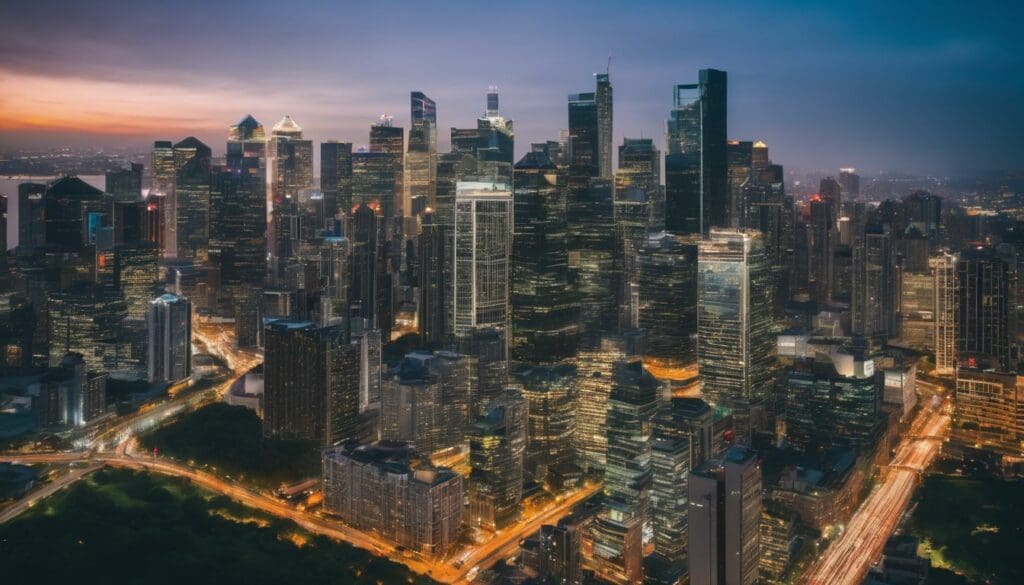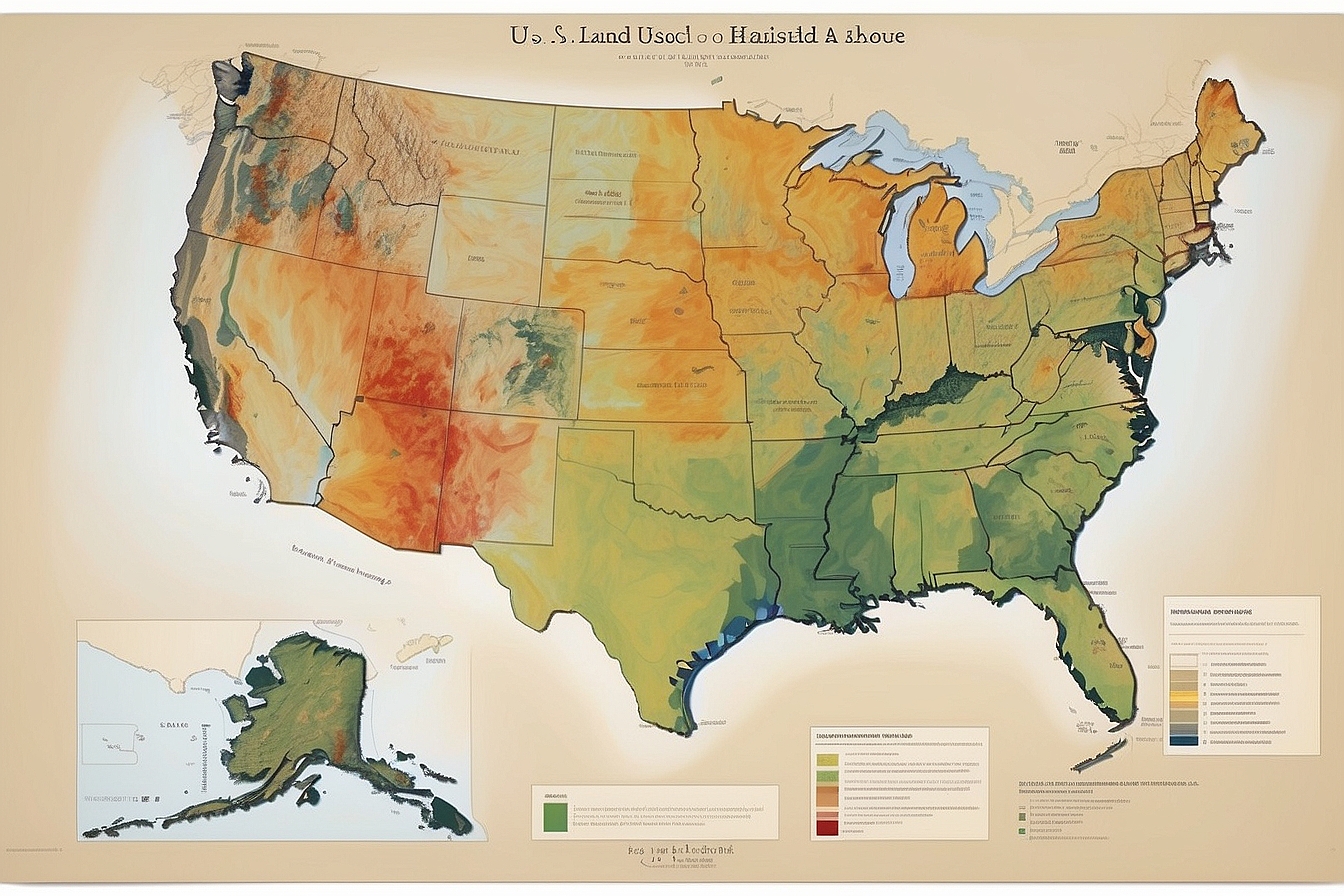As the sun rises, our cities continue their steady march into the countryside, a relentless tide of concrete encroaching upon green spaces. This expansion is familiar to many of us; it unfolds before our very eyes and carries with it a host of concerns.
Notably, urban sprawl has seen metropolitan areas become culpable for almost three-quarters of carbon emissions created by human activities. Our investigation delves into the very heart of this matter, exploring not just the immediate impacts but also sifting through the intricate web of underlying causes that propel city boundaries outward.
Join us as we unravel what drives the growth of our cities—and why understanding this phenomenon is crucial for each one of us.
Key Takeaways
- Urban sprawl is caused by factors such as population growth, increasing wealth, poor urban planning, affordable outlying land and improved infrastructure.
- The expansion into rural areas due to urban sprawl leads to heavy environmental costs like loss of natural habitats, pollution and climate change impacts.
- Economically, sprawl results in increased expenses for governments on infrastructure and services as well as higher transport costs for individuals.
- It also brings social consequences including reduced community cohesion and a negative impact on the physical and mental health of residents due to less green space.
Causes of Urban Sprawl
Urban sprawl is largely driven by population growth, rising incomes, and lower land rates. The lack of proper urban planning and the improved infrastructure have also contributed to the outward expansion of metropolitan areas.
Population growth
Cities face increasing challenges as more of us choose to live in urban areas. This population growth drives the outward expansion of cities into what was once rural land, a process known as suburbanisation.
As families grow and more people move into metropolitan regions seeking opportunities, residential areas swell beyond their initial boundaries.
We see a rise in land development to accommodate this surge in demand for housing and services. The lure of space, privacy, and affordable housing compels many to settle on the edges of cities, fuelling further suburban sprawl.
This ever-increasing spread can strain our infrastructure—roads become congested with traffic; public transport systems stretch thin; and energy use spikes as homes crop up over vast distances.
Our next point delves into rising incomes – adding another layer that alters land use patterns significantly.
Rising incomes
As incomes rise, people have more purchasing power, leading to increased demand for housing and consumer goods. This can drive urban sprawl as individuals seek larger homes in suburban areas with more green space and amenities.
Rising incomes also contribute to increased car ownership, which leads to greater reliance on private transport and the subsequent need for wider road networks.
Additionally, higher incomes can result in a desire for bigger houses with gardens or access to recreational facilities, contributing to the expansion of residential areas further away from city centers.
Lack of urban planning
The lack of urban planning contributes to haphazard development, resulting in sprawling cities with inadequate infrastructure. This absence of comprehensive city planning leads to unregulated expansion and inefficient use of land, leading to increased traffic congestion, reduced access to public places, and a decline in community distinctiveness.
Moreover, it negatively impacts water quality and the environment as a whole, placing additional strain on surrounding natural resources.
Insufficient urban planning exacerbates the challenges associated with rapid urbanisation and residential expansion. The consequences are felt not only environmentally but also economically and socially, affecting the overall well-being of communities.
Lower land rates
Lower land rates encourage urban sprawl as they make it more cost-effective for developers to build on undeveloped land in suburban areas. This drives the expansion of cities into rural areas, leading to increased vehicle use and longer commutes, which contributes to air and noise pollution.
Consequently, the development of previously untouched land leads to less natural habitat for wildlife and reduces biodiversity.
The cheap availability of land also discourages infill development within existing city boundaries, resulting in inefficient land use. As a result, conservationists argue for better planning policies that discourage low-density development by making it financially unappealing while promoting sustainable practices such as mixed-use developments and green spaces.
Improved infrastructure
Improved infrastructure plays a pivotal role in urban sprawl. As cities develop and expand, the demand for better transportation, communication, and utilities increases. This leads to the improvement of roads, bridges, public transport systems, water supply networks, and energy facilities.
Such developments open up previously untouched areas for construction and increase connectivity between urban centres and suburban regions.
Furthermore, as infrastructure improves in certain areas, it incentivises further development in those locations. Consequently, improved infrastructure facilitates suburban expansion and encourages more people to reside outside city limits while still having access to essential amenities.
The rise in standard of living
Improved infrastructure often leads to economic growth and an increase in the standard of living. As cities expand and suburban development continues, there is a notable rise in incomes and the overall quality of life for residents.
The availability of better amenities and facilities contributes to this improvement, along with access to well-paying jobs in metropolitan areas.
Policy-related factors also play a significant role, as governing bodies seek ways to enhance the environment and city dwellers’ lives. With infrastructure development at its peak, individuals are more inclined towards urban living due to increased job opportunities, educational prospects, healthcare services, and recreational options.
Lack of proper laws and regulations
The rise in standard of living has led to urban sprawl, but this growth has not been met with sufficient laws and regulations to guide development. Without appropriate policies, unplanned expansion causes numerous problems for the environment, economy, and society.
Policy-related factors are crucial in controlling city expansion and mitigating its environmental impact while safeguarding social life. The absence of suitable laws and regulations exacerbates the negative consequences of urban sprawl.
This lack of proper laws and regulations creates challenges when trying to address the environmental costs, economic costs, and social costs associated with urban sprawl. Inadequate regulation significantly contributes to these issues by failing to control unsustainable development practices that harm ecosystems, deplete resources, disrupt communities, and increase pollution levels.
Consequences of Urban Sprawl
Urban sprawl leads to environmental, economic, and social costs that have long-term impacts on our communities. Read on to learn more about the consequences of urban sprawl and why it’s important to address this issue.
Environmental costs
Urban sprawl comes with significant environmental costs. Increased development leads to the loss of natural habitats and green spaces, impacting biodiversity. Pollution from increased traffic and industrial activities contributes to poor air quality and water contamination in urban areas.
Deforestation for construction not only disrupts ecosystems but also reduces carbon sequestration, exacerbating climate change. Moreover, the expansion of infrastructure leads to soil erosion and disruption of natural water flow, increasing the risk of flooding.
The environmental costs of urban sprawl are substantial, affecting not only wildlife but also the overall health and well-being of communities. Encouraging sustainable urban planning and green infrastructure can mitigate these negative impacts on our environment while supporting a healthier ecosystem for future generations.
Economic costs
Urban sprawl comes with significant economic costs. The expansion of cities often leads to higher infrastructure and maintenance expenses for local governments. This includes the need for new roads, utilities, and public services in outlying areas, which can strain municipal budgets.
Additionally, urban sprawl can increase commuting distances and times, leading to higher transportation expenses for both individuals and businesses. Moreover, the decline in property values in inner-city areas due to urban sprawl can result in reduced tax revenues for local authorities.
Furthermore, urban sprawl negatively impacts the economy through inefficient land use, as it leads to fragmented development patterns that require more extensive infrastructure networks.
Social costs
Urban sprawl carries significant social costs, impacting community cohesion and quality of life. As cities expand outward, the sense of community often diminishes, leading to increased isolation among residents.
This shift can result in decreased social interaction and a weakened support system within neighbourhoods. Moreover, urban sprawl has been linked to longer commute times and traffic congestion, reducing the time individuals have available for family and leisure activities.
Additionally, as development spreads across rural areas, it often displaces agricultural land or natural environments that were once used for recreational purposes by local communities.
Conclusion
In conclusion, urban sprawl is driven by population growth and rising incomes. Lack of urban planning and lower land rates also contribute to this phenomenon. Improved infrastructure and the rise in standard of living further fuel urban sprawl.
The consequences include environmental, economic, and social costs that have a negative impact on communities.
FAQs
1. What causes urban sprawl?
Urban sprawl often happens due to infrastructure improvement and policy-related factors that encourage city growth into surrounding areas.
2. How does urban sprawl affect communities?
Urban sprawl can have a negative impact on social life by increasing distances between places where people live, work, and socialise.
3. Can urban expansion be controlled?
Yes, by creating smart policies focused on sustainable development we can manage the growth of our cities more effectively.
4. Does improving public transportation help reduce urban sprawl?
Improving public transportation is one way to counteract the effects of urban sprawl because it provides alternatives to using personal vehicles and encourages compact development.





